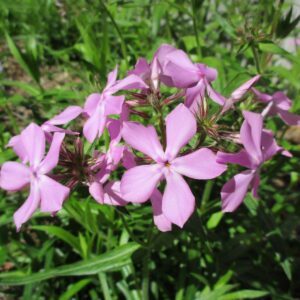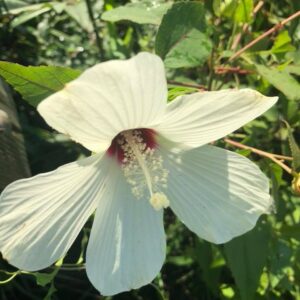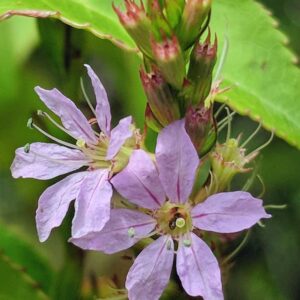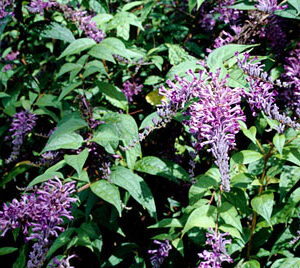Price range: $12.00 through $95.00
Description
Yucca gloriosa (Moundlily Yucca) make very dramatic garden plants. The trunks can grow over 16 feet tall and their 2 to 3 foot long concave blue-green leaves are present year round . In summer, 8 foot tall candelabra-like panicles of fragrant white flowers rise above the foliage. They show up beautifully by moonlight. Although hardy from zones 6-11, they are only native to NC, SC, GA, FL, AL, MS, and LA. We propagated our plants from native populations in Beaufort Co., SC. The leaf tips on this species are flexible, so they will not stab you when you work around them. If you need a pokier plant to close off a path, check Yucca aloifolia (Spanish Bayonet). If you want to keep them shorter and bushier, cut the trunks to the ground every few years. Two or more shoots will come up shortly afterward.
Yucca are wildlife magnets. Several insects cannot live without them. Yucca Moths pollinate the flowers, and then lay eggs on them. Their larvae feed on the developing seeds. There are many species of Yucca Moth. At least two of them occur in the Southeastern US: The Yucca Moth (Tegeticula yuccasella) and the Bogus Yucca Moth (Prodoxus decipiens). Yucca are also the sole larval hosts of the Yucca Giant Skipper, and Cofaqui Giant Skipper. The caterpillars feed inside the stems and roots, so they are rarely seen. Hummingbirds and other Butterflies visit the flowers as well. Several other insects including Yucca Plant Bugs (Halticoma valida) and Yucca Thrips (Bagnalliella yuccae) depend on them as well. The above-mentioned insects cannot reproduce without Yucca. Many more “generalist” insects visit Yucca when they are flower or fruit. Birds and small mammals love Yucca too. They eat the fruit and seed, hunt its insects to feed their young, and shelter from larger predators among the spiky leaves. Building a nest among the Yucca is a good way to prevent egg thieves.
Native Americans used Yucca in countless ways. They ate the fruit, made shampoo from the roots, and rope and sandals from the leaves. European and African settlers learned some of these techniques. In the Southeast, yucca leaves were used to tie hams in smokehouses.
Plant your Yucca gloriosa in full sun/part shade in well-drained soil. In the wild, they grow in sand dunes and along the margins of salt marshes. They tolerate extremely dry soils, salt wind, and salt water. Rarely eaten by deer. Plant “tastier” plants among them, deer should leave them alone too. Not sure where to plant one, they are fine in containers. If the rain falls on them, they do not need irrigation.
Some interesting links: https://bushcraftusa.com/forum/threads/yucca-sandals.208663/
Additional information
| Weight | N/A |
|---|---|
| Dimensions | N/A |
| Size | 7 gallon, Qt pot, 3.5" pot, 1 gallon, 3 gallon |








Reviews
There are no reviews yet.